Variation of Critical Water Pressure for Hydraulic Fracturing in Cement Mortar under Sulfate Attack
Abstract
:1. Introduction
2. Experimental Program
2.1. Material and Specimen Preparation
2.2. Sulfate Exposure Tests
2.3. Hydraulic Fracturing Tests
2.4. Splitting Tensile Strength Tests
3. Results
3.1. Strength Change
3.2. Evolution of Critical Water Pressure
4. Theoretical Analysis of Critical Water Pressure under Sulfate Attack
4.1. Porosity Development of Cement Mortar under Sulfate Attack
4.2. Evolution of Tensile Strength under Sulfate Attack
4.3. Evolution Model of Critical Water Pressure under Sulfate Attack
5. Conclusions
Author Contributions
Funding
Institutional Review Board Statement
Informed Consent Statement
Data Availability Statement
Conflicts of Interest
References
- Zhong, H.; Li, H.J.; Ooi, E.T.; Song, C.M. Hydraulic fracture at the dam-foundation interface using the scaled boundary finite element method coupled with the cohesive crack model. Eng. Anal. Bound. Elem. 2018, 88, 41–53. [Google Scholar] [CrossRef]
- Bruhwiler, E.; Saouma, V.E. Water fracture interaction in concrete-Part I: Fracture properties. ACI Mater. J. 1995, 92, 296–303. [Google Scholar]
- Slowik, V.; Saouma, V.E. Water pressure in propagating concrete cracks. J. Struct. Eng. 2000, 126, 235–242. [Google Scholar] [CrossRef]
- Chen, X.C.; Du, C.B.; You, M.Y.; Jiang, S.Y.; Sun, L.G. Experimental study on water fracture interactions in concrete. Eng. Fract. Mech. 2017, 179, 314–327. [Google Scholar] [CrossRef]
- Wang, Y.; Jia, J.S. Experimental study on the influence of hydraulic fracturing on high concrete gravity dams. Eng. Struct. 2017, 132, 508–517. [Google Scholar] [CrossRef]
- Zhang, H.W.; Shen, Z.Z.; Xu, L.Q.; Gan, L.; Ma, Z.K.; Wu, Q.; Liu, D.T. Experimental investigation on hydraulic fracturing in cement mortar with tensile strength. Eng. Fract. Mech. 2022, 259, 108058. [Google Scholar] [CrossRef]
- Secchi, S.; Schrefler, B.A. A method for 3-D hydraulic fracturing simulation. Int. J. Fract. 2012, 178, 245–258. [Google Scholar] [CrossRef]
- Yu, X.T.; Zhu, Y.W.; Liao, Y.D.; Chen, D. Study of the evolution of properties of mortar under sulfate attack at different concentrations. Adv. Cem. Res. 2016, 28, 617–629. [Google Scholar] [CrossRef]
- Miyamoto, S.; Minagawa, H.; Hisada, M. Deterioration rate of hardened cement caused by high concentrated mixed acid attack. Constr. Build. Mater. 2014, 67, 47–54. [Google Scholar] [CrossRef]
- Liu, P.; Chen, Y.; Yu, Z.W. Effects of Erosion Form and Admixture on Cement Mortar Performances Exposed to Sulfate Environment. Crystals 2020, 10, 774–792. [Google Scholar] [CrossRef]
- Sun, C.; Chen, J.K.; Zhu, J.; Zhang, M.H.; Ye, J. A new diffusion model of sulfate ions in concrete. Constr. Build. Mater. 2013, 39, 39–45. [Google Scholar] [CrossRef]
- Yu, X.T.; Chen, D.; Feng, J.R.; Zhang, Y.; Liao, Y.D. Behavior of mortar exposed to different exposure conditions of sulfate attack. Ocean Eng. 2018, 157, 1–12. [Google Scholar] [CrossRef]
- Yao, J.W.; Yang, Y.Z.; Chen, J.K. A novel chemo-mechanical model for fracture toughness of mortar under sulfate attack. Theor. Appl. Fract. Mech. 2020, 109, 102762. [Google Scholar] [CrossRef]
- Ouyang, W.Y.; Chen, J.K.; Jiang, M.Q. Evolution of surface hardness of concrete under sulfate attack. Constr. Build. Mater. 2014, 53, 419–424. [Google Scholar] [CrossRef] [Green Version]
- Zhang, Z.Y.; Zhou, J.T.; Zou, Y.; Yang, J.; Bi, J. Change on shear strength of concrete fully immersed in sulfate solutions. Constr. Build. Mater. 2020, 235, 117463. [Google Scholar] [CrossRef]
- Chen, J.K.; Jiang, M.Q.; Zhu, J. Damage evolution in cement mortar due to erosion of sulfate. Corros. Sci. 2008, 50, 2478–2483. [Google Scholar] [CrossRef] [Green Version]
- Jiang, L.; Niu, D.T. Study of deterioration of concrete exposed to different types of sulfate solutions under drying-wetting cycles. Constr. Build. Mater. 2016, 117, 88–98. [Google Scholar] [CrossRef]
- Jin, Z.Q.; Sun, W.; Zhang, Y.S.; Jiang, J.Y.; Lai, J.Z. Interaction between sulfate and chloride solution attack of concretes with and without fly ash. Cem. Concr. Res. 2007, 37, 1223–1232. [Google Scholar]
- Santhanam, M.; Cohen, M.D.; Olek, J. Effects of gypsum formation on the performance of cement mortars during external sulfate attack. Cem. Concr. Res. 2003, 33, 325–332. [Google Scholar] [CrossRef]
- Nehdi, M.; Hayek, M. Behavior of blended cement mortars exposed to sulfate solutions cycling in relative humidity. Cem. Concr. Res. 2005, 35, 731–742. [Google Scholar] [CrossRef]
- Lee, S.T. Performance of Mortars exposed to different sulfate concentrations. KSCE J. Civ. Eng. 2012, 16, 601–609. [Google Scholar] [CrossRef]
- Chindaprasirt, P.; Kanchanda, P.; Sathonsaowaphak, A.; Cao, H.T. Sulfate resistance of blended cements containing fly ash and rice husk ash. Constr. Build. Mater. 2007, 21, 1356–1361. [Google Scholar] [CrossRef]
- Yin, G.J.; Zuo, X.B.; Tang, Y.J.; Ayinde, O.; Wang, J.L. Numerical simulation on time-dependent mechanical behavior of concrete under coupled axial loading and sulfate attack. Ocean Eng. 2017, 142, 115–124. [Google Scholar] [CrossRef]
- Wu, J.Y.; Li, J.; Faria, R. An energy release rate-based plastic-damage model for concrete. Int. J. Solids Struct. 2006, 43, 583–612. [Google Scholar] [CrossRef] [Green Version]
- Bary, B.; Leterrier, N.; Deville, E.; Bescop, P.L. Coupled chemo-transport-mechanical modelling and numerical simulation of external sulfate attack in mortar. Cem. Concr. Compos. 2014, 49, 70–83. [Google Scholar] [CrossRef]
- Zhou, C.L.; Zhu, Z.M.; Wang, Z.H.; Qiu, H. Deterioration of concrete fracture toughness and elastic modulus under simulated acid-sulfate environment. Constr. Build. Mater. 2018, 176, 490–499. [Google Scholar] [CrossRef]
- Araghi, H.J.; Nikbin, I.M.; Reskati, S.R.; Rahmani, E. An experimental investigation on the erosion resistance of concrete containing various PET particles percentages against sulfuric acid attack. Constr. Build. Mater. 2015, 77, 461–471. [Google Scholar] [CrossRef] [Green Version]
- GB/T 749-2008; Test Method for Determing Capability of Resisting Sulfate Corrode of Cement. Standardization Administration of the People’s Republic of China: Beijing, China, 2009.
- Chen, D.; Yu, X.T.; Guo, M.Y.; Liao, Y.D.; Ouyang, F. Study on the mechanical properties of the mortars exposed to the sulfate attack of different concentrations under the triaxial compression with constant confining pressure. Constr. Build. Mater. 2017, 146, 445–454. [Google Scholar] [CrossRef]
- DL/T 5150-2017; Test Code for Hydraulic Concrete. China Electric Power Press: Beijing, China, 2018.
- Chen, J.; Jiang, M. Long-term evolution of delayed ettringite and gypsum in Portland cement mortars under sulfate erosion. Constr. Build. Mater. 2009, 23, 812–816. [Google Scholar] [CrossRef] [Green Version]
- Bonakdar, A.; Mobasher, B. Multi-parameter study of external sulfate attack in blended cement materials. Constr. Build. Mater. 2010, 24, 61–70. [Google Scholar] [CrossRef]
- Liu, L.; Zhu, C.; Qi, C.C.; Zhang, B.; Song, K. A microstructural hydration model for cemented paste backfill considering internal sulfate attacks. Constr. Build. Mater. 2019, 211, 99–108. [Google Scholar] [CrossRef]
- Wang, H.L.; Li, Q.B. Prediction of elastic modulus and Poisson’s ratio for unsaturated concrete. Int. J. Solids Struct. 2007, 44, 1370–1379. [Google Scholar] [CrossRef] [Green Version]
- Du, X.L.; Jin, L.; Ma, G.W. Macroscopic effective mechanical properties of porous dry concrete. Cem. Concr. Res. 2013, 44, 87–96. [Google Scholar] [CrossRef]
- Tekin, I.; Birgul, R.; Aruntas, H.Y. X-ray monitoring of macrovoid development in mortars exposed to sulfate attack. Comput. Concr. 2018, 21, 367–376. [Google Scholar]
- Neubauer, C.M.; Jennings, H.M. A three-phase model of the elastic and shrinkage properties of mortar. Adv. Cem. Based Mater. 1996, 4, 6–20. [Google Scholar] [CrossRef]
- Zheng, J.J.; Li, C.Q.; Zhao, L.Y. Simulation of two dimensional aggregate distributions with wall effect. J. Mater. Civ. Eng. 2003, 15, 506–510. [Google Scholar] [CrossRef]
- Lee, K.M.; Park, J.H. A numerical model for elastic modulus of concrete considering interfacial transition zone. Cem. Concr. Res. 2008, 38, 396–402. [Google Scholar] [CrossRef]
- Duan, H.L.; Jiao, Y.; Yi, X.; Huang, Z.P.; Wang, J. Solutions of inhomogeneity problems with graded shells and application to core-shell nanoparticles. J. Mech. Phys. Solids 2006, 54, 1401–1425. [Google Scholar] [CrossRef]
- Jin, L.; Du, X.L.; Ma, G.W. Macroscopic effective moduli and tensile strength of saturated concrete. Cem. Concr. Res. 2012, 42, 1590–1600. [Google Scholar] [CrossRef]
- Zheng, J.J.; Zhou, X.Z.; Jiang, L. Three-phase composite sphere model for the prediction of young’s modulus of concrete. Acta Mater. Compos. Sin. 2005, 22, 102–107. [Google Scholar]
- Li, Q.B. Fracture Damage Mechanics of Concrete; Science Press: Beijing, China, 2017; pp. 47–51. [Google Scholar]
- Xu, S.L.; Reinhardt, H.W. Determination of double-K criterion for crack propagation in quasibrittle fracture Part II: Analytical evaluating and practical measuring methods for three-point bending notched beams. Int. J. Fract. 1999, 98, 151–177. [Google Scholar] [CrossRef]
- Zhu, Z.M.; Wang, L.G.; Mohanty, B. Stress intensity factor for a cracked specimen under compression. Eng. Fract. Mech. 2005, 73, 482–489. [Google Scholar] [CrossRef]
- Zhu, Z.M. An alternative form of propagation criterion for two collinear cracks under compression. Math. Mech. Solids 2009, 14, 727–746. [Google Scholar] [CrossRef]
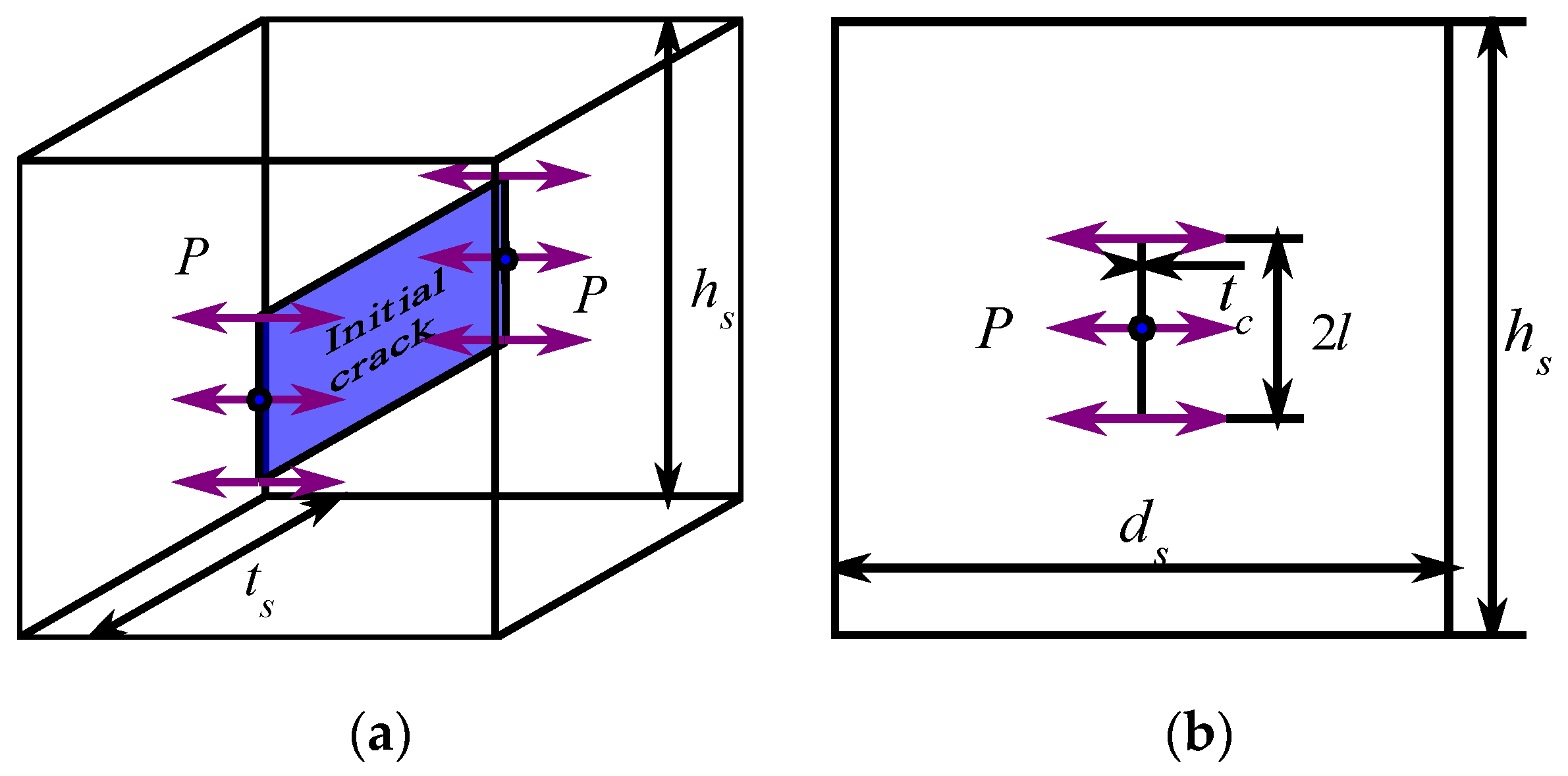

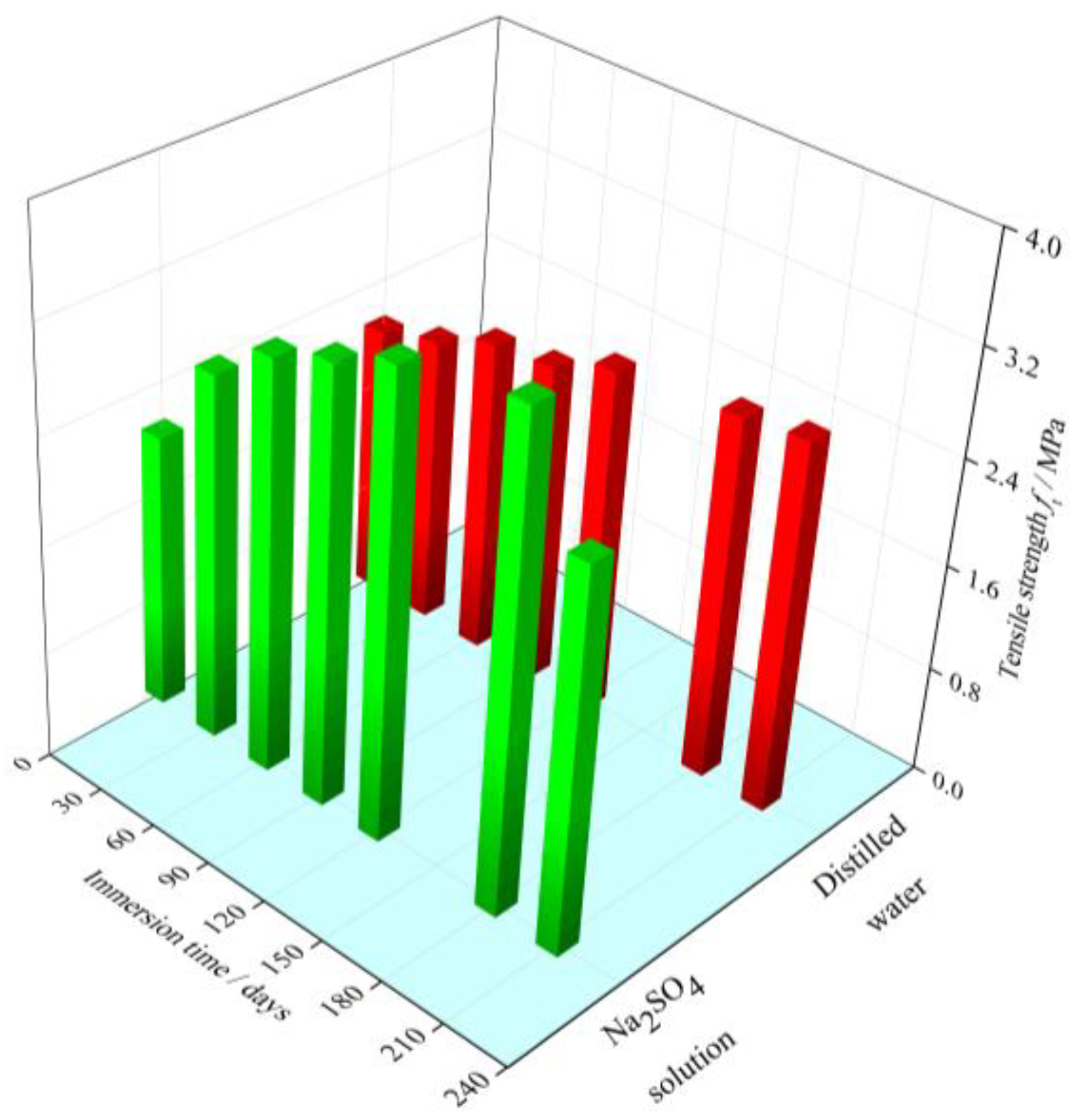
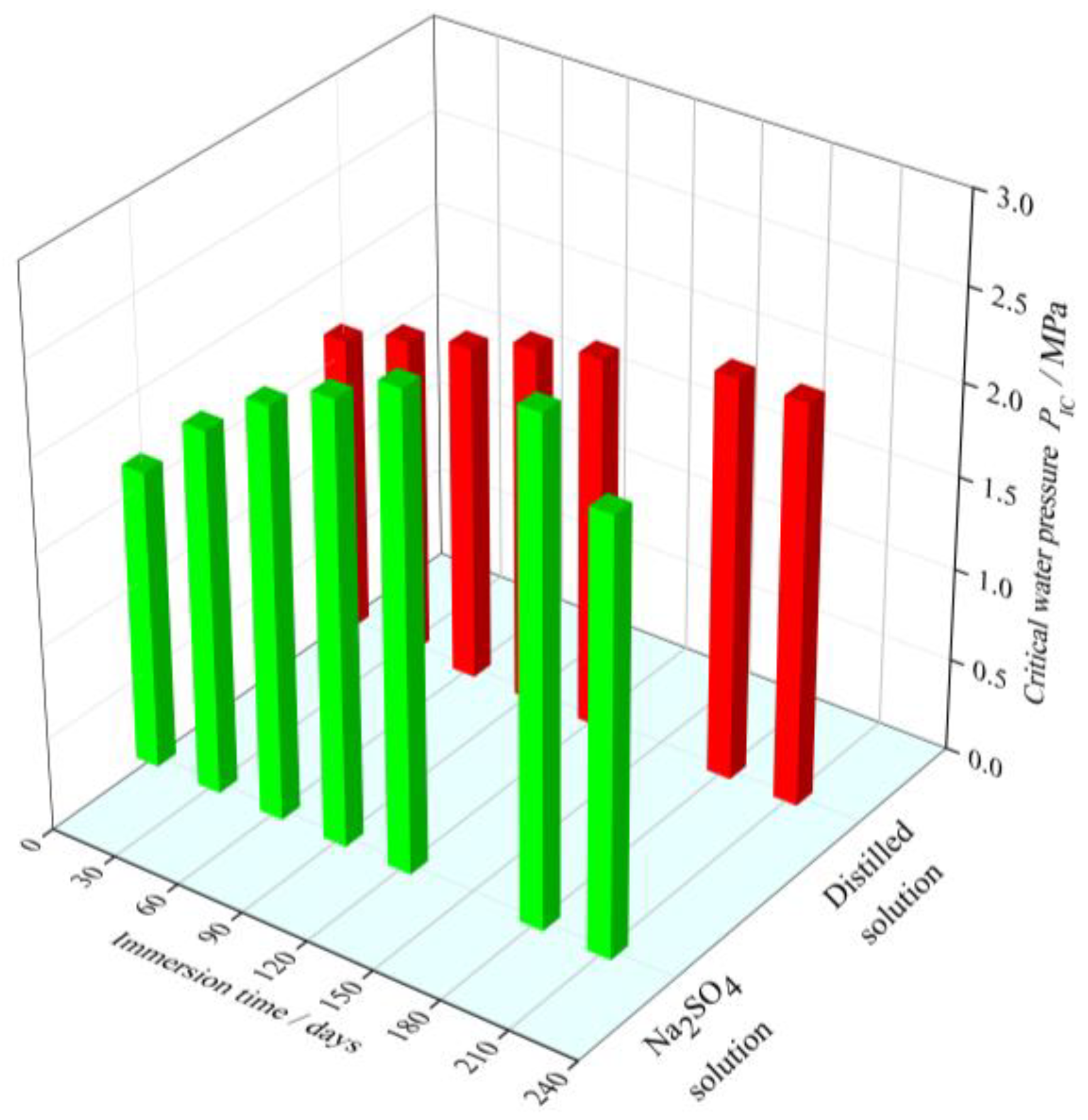
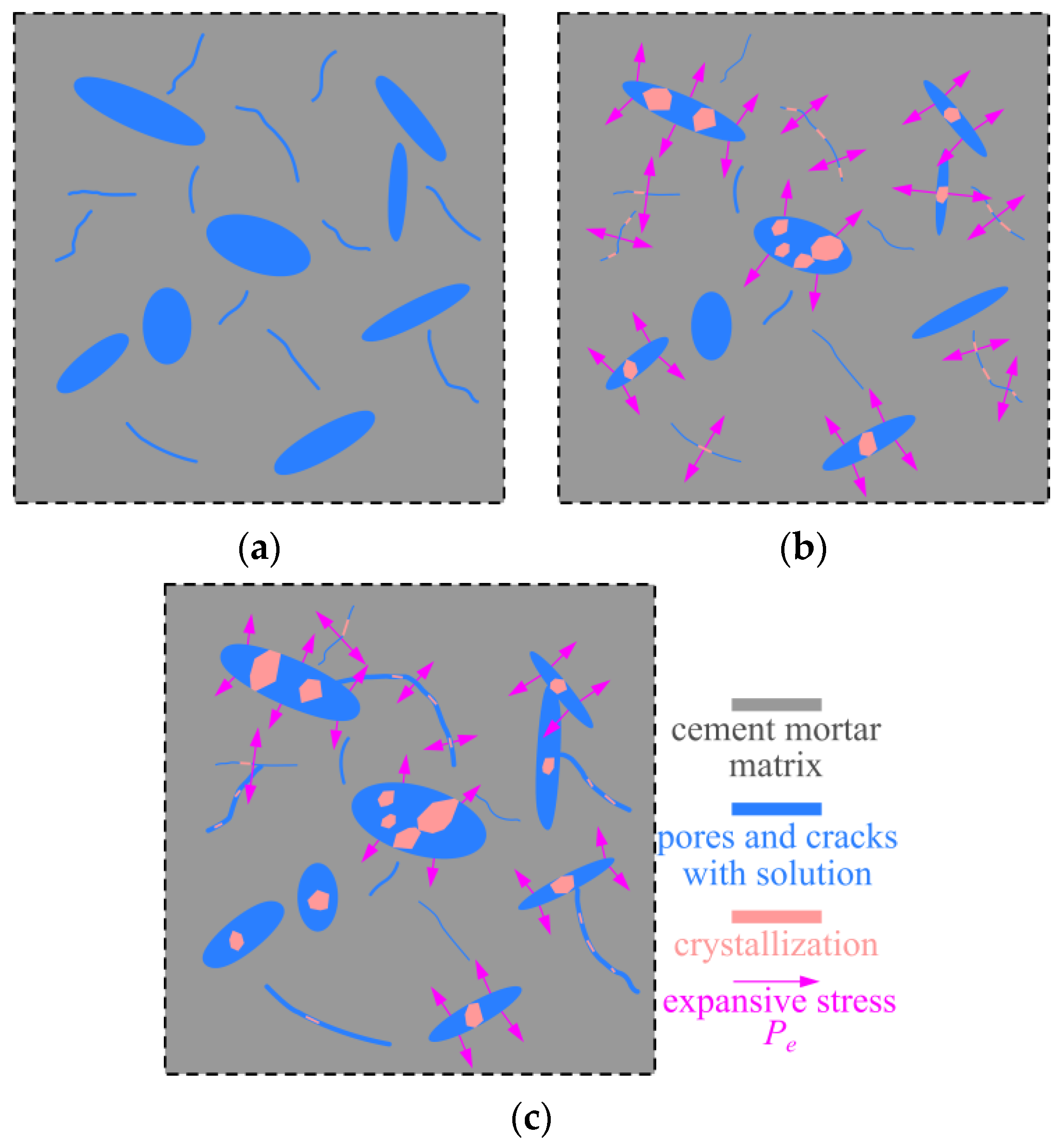
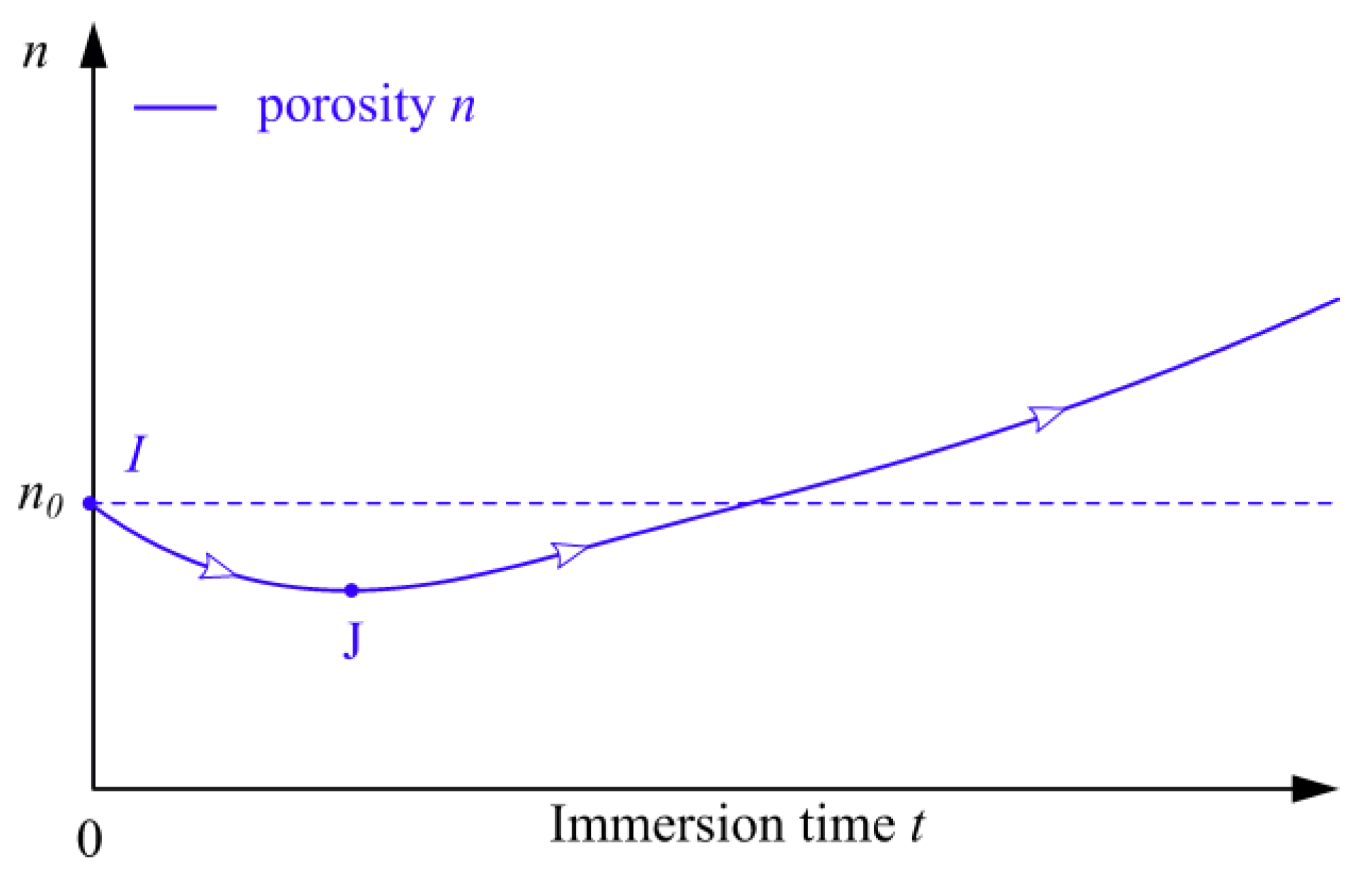
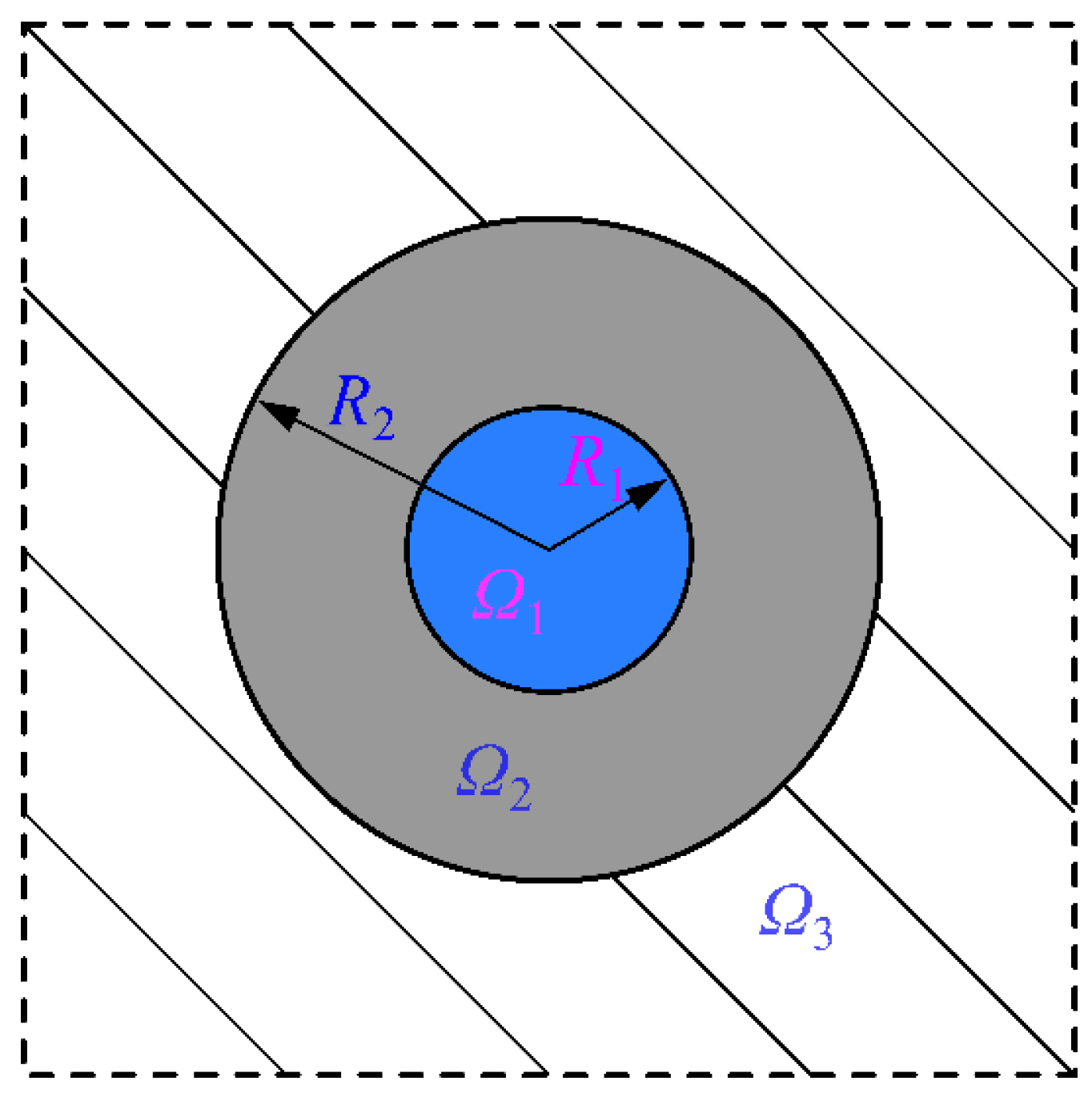
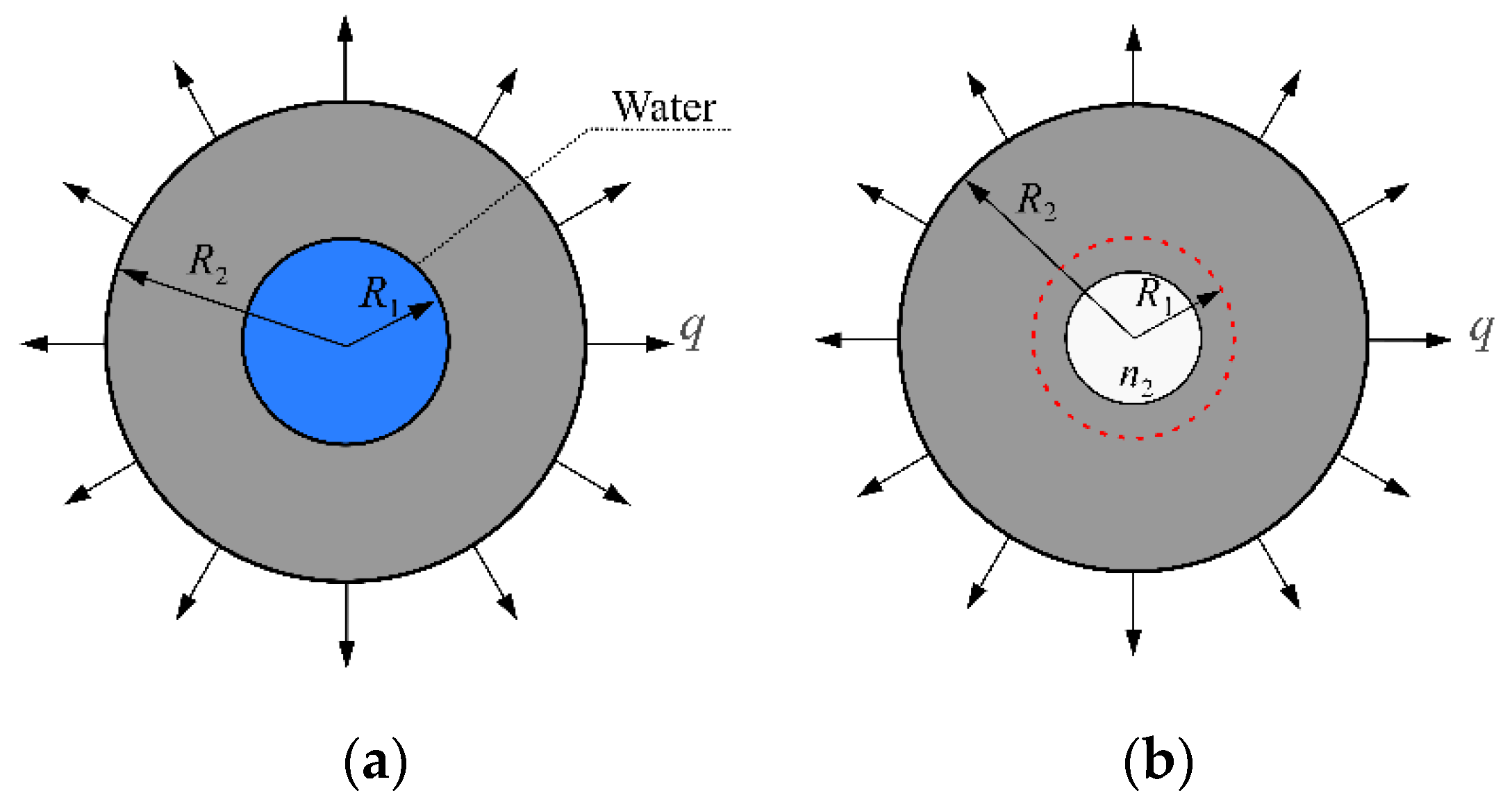
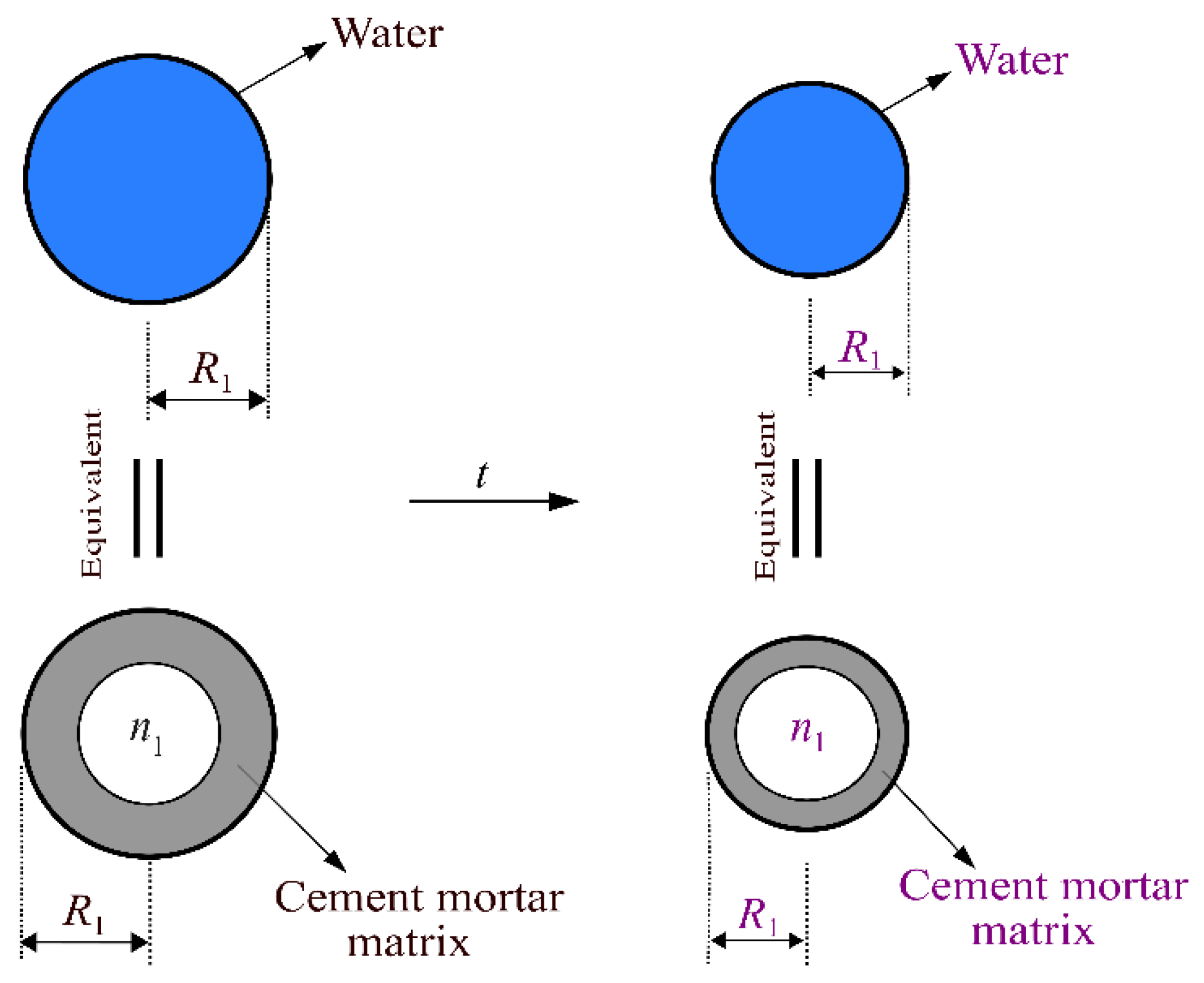

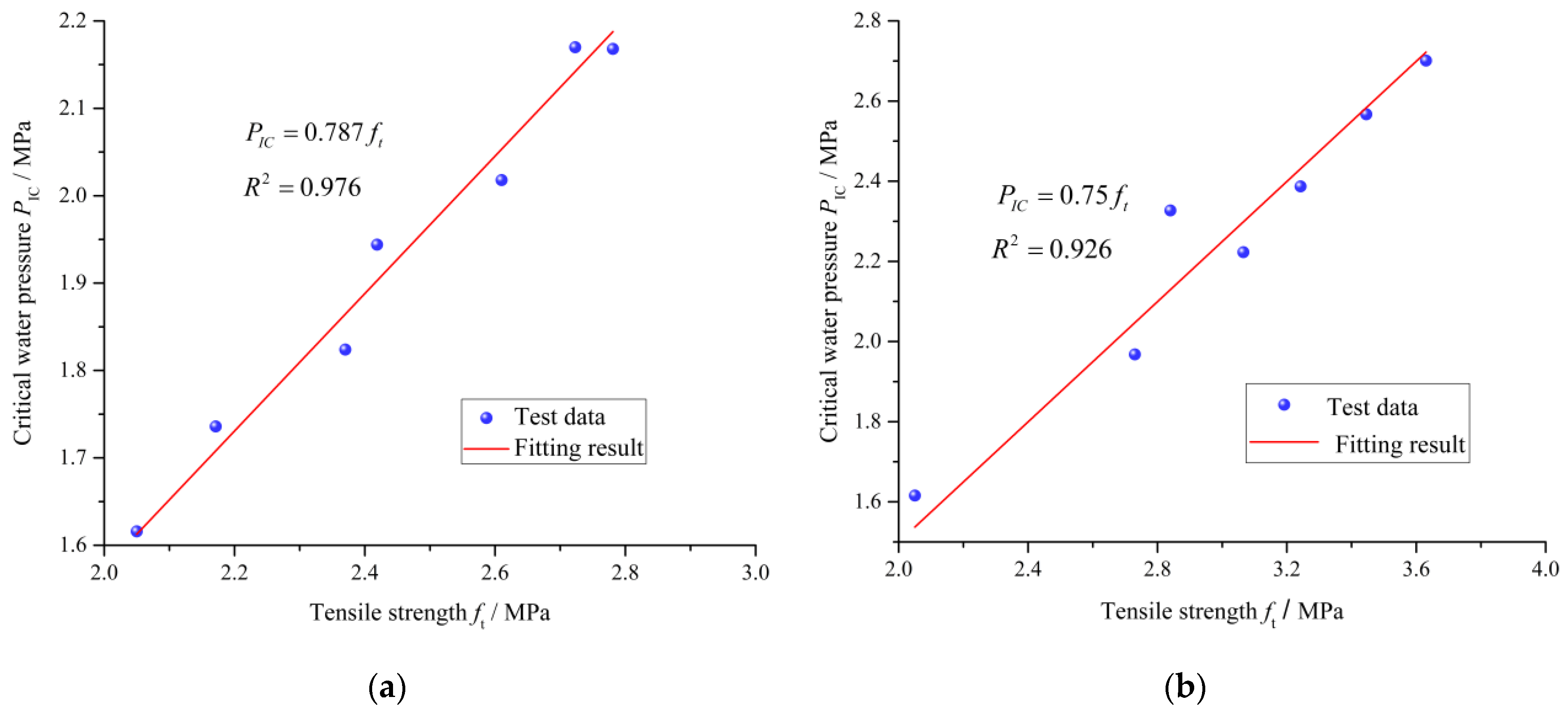
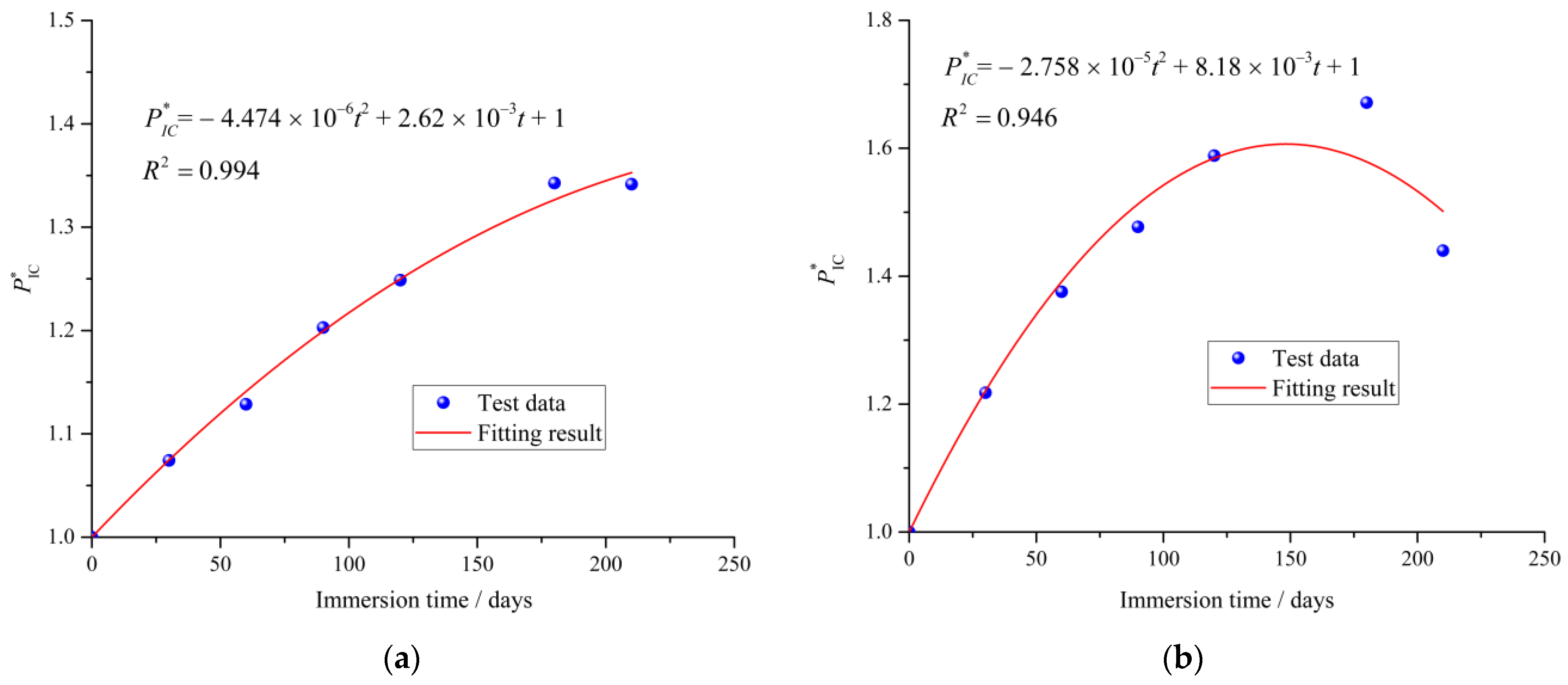
| Project | Exposure Condition | Specimen Grouping | Exposure Time (Days) |
|---|---|---|---|
| Series 1 | Distilled water | Three specimens in a group, 7 groups | 0, 30, 60, 90, 120, 180, 210 |
| Series 2 | Na2SO4 solution | Three specimens in a group, 7 groups | 0, 30, 60, 90, 120, 180, 210 |
Publisher’s Note: MDPI stays neutral with regard to jurisdictional claims in published maps and institutional affiliations. |
© 2022 by the authors. Licensee MDPI, Basel, Switzerland. This article is an open access article distributed under the terms and conditions of the Creative Commons Attribution (CC BY) license (https://creativecommons.org/licenses/by/4.0/).
Share and Cite
Liu, D.; Zhang, H.; Shen, Z.; Xu, L.; Wu, Q.; Ge, Y. Variation of Critical Water Pressure for Hydraulic Fracturing in Cement Mortar under Sulfate Attack. Materials 2022, 15, 1595. https://doi.org/10.3390/ma15041595
Liu D, Zhang H, Shen Z, Xu L, Wu Q, Ge Y. Variation of Critical Water Pressure for Hydraulic Fracturing in Cement Mortar under Sulfate Attack. Materials. 2022; 15(4):1595. https://doi.org/10.3390/ma15041595
Chicago/Turabian StyleLiu, Detan, Hongwei Zhang, Zhenzhong Shen, Liqun Xu, Qiong Wu, and Yidong Ge. 2022. "Variation of Critical Water Pressure for Hydraulic Fracturing in Cement Mortar under Sulfate Attack" Materials 15, no. 4: 1595. https://doi.org/10.3390/ma15041595
APA StyleLiu, D., Zhang, H., Shen, Z., Xu, L., Wu, Q., & Ge, Y. (2022). Variation of Critical Water Pressure for Hydraulic Fracturing in Cement Mortar under Sulfate Attack. Materials, 15(4), 1595. https://doi.org/10.3390/ma15041595







